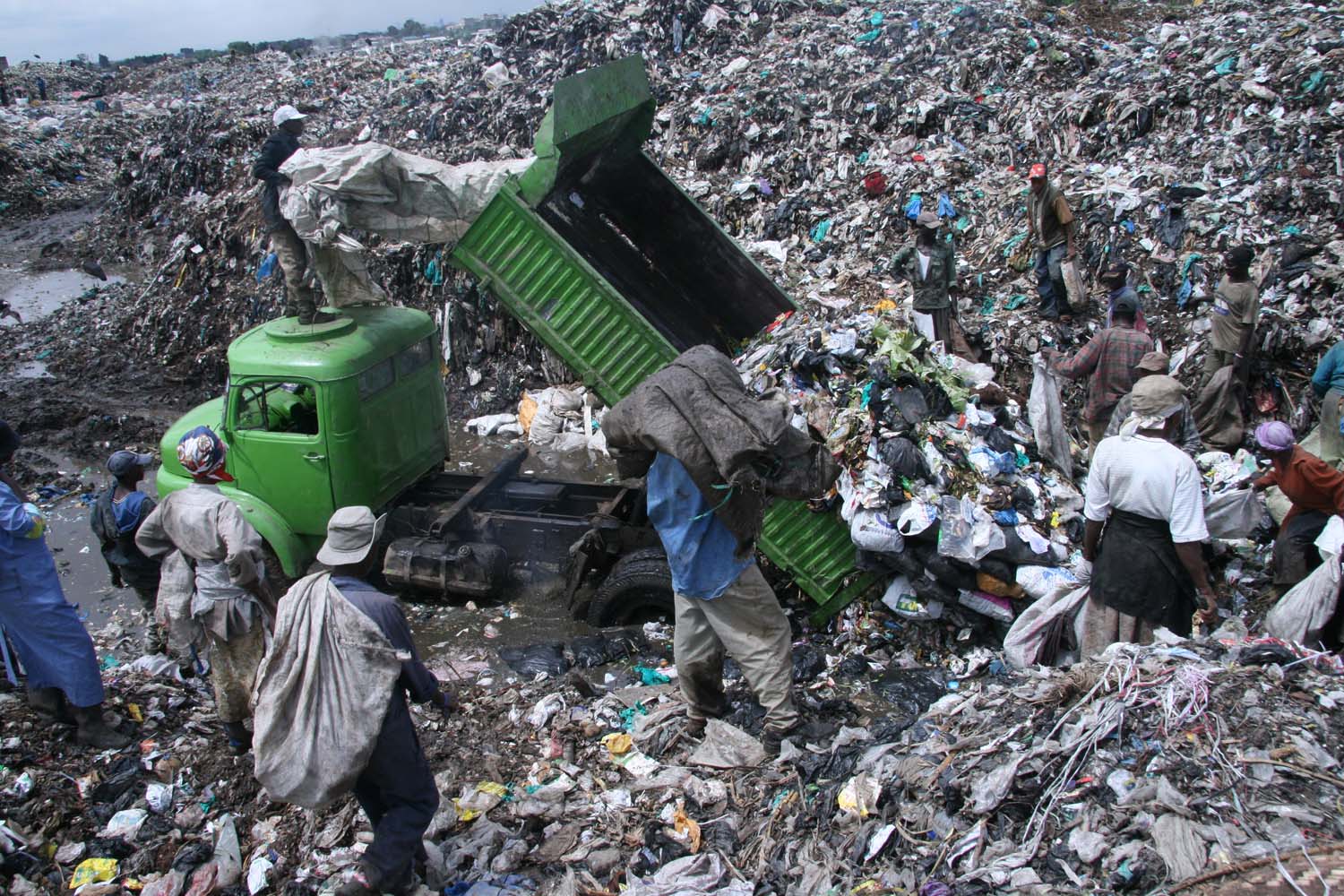The Dandora municipal waste site east of Nairobi continues to pose environmental and health risks even after a study recommended its closure, said specialists.
“The dumpsite is a big, big health problem and it has had a very bad impact on the environment,” Njoroge Kimani, a biochemist, said, adding that the unrestricted dumping of domestic, industrial, hospital and agricultural waste at the city’s main dumping site was cause for concern.
“The land cannot be used for domestic and agricultural use,” Kimani told IRIN.
The dumpsite occupies about 30 acres, with at least 2,000 tonnes of waste deposited daily. It is near the informal settlements of Kariobangi north and Korogocho, as well as the Dandora and Baba ndogo residential estates.
Kimani, who was the principal investigator in a 2007 study of the site, said it had significantly affected the environment and people living nearby. “The waste clogs the drainage systems, and spreads all over into the residential areas.” The Nairobi River, which passes near the dumpsite, has also been polluted by waste seeping into it.
Impact
The study, commissioned by the UN Environmental Programme (UNEP), revealed that soil samples collected from the site recorded high levels of lead compared with reference standards in the Netherlands and Taiwan. Similar findings were reported for other heavy metals.
Tests conducted on 328 children and adolescents living and attending school near the dumpsite revealed a significant health impact, Kimani said, with 154 suffering respiratory problems.
According to the study, medical records obtained from the Catholic Church dispensary at Kariobangi showed that an average 9,121 people were treated for respiratory tract-related problems in 2003-2006.
Cases of skin disorders, abdominal problems and eye infections were also common among those tested. Malaria could be another threat, Kimani said, since blocked drains collected water and became breeding grounds for mosquitoes.
Relocation plan
The government however, is planning to relocate the site as part of its integrated solid waste management plan in partnership with UNEP.
“We shall move it to a sanitary land site in Ruai [on the outskirts of Nairobi city] in the next two years,” Francis N Kihumba, the chemicals and waste co-coordinator at the Ministry of Environment, said. The government is first planning an environmental impact assessment (EIA) of the new site, which is at least 200 acres, he said.
“Once we have completed the EIA, the Dandora site will be decommissioned,” he said, adding that the new site would protect the land, air and water from the impact of solid waste and also provide recycling facilities.
 Photo: Julius Mwelu/IRIN  |
| This resident has been earning a living from the Dandora dumpsite for the last 12 years |
“The old site could be used for recreation,” he added.
The relocation however, was not welcomed by Livingstone Waweru, who lives at the dump. “It will affect us seriously, I have to start afresh,” he said. “They want to recycle? They should hire us instead.”
Waweru, like many others, ekes out a living from unloading garbage from the 40 trucks which deliver waste daily. He also sells scrap metal, cables and bottles to brokers who resell them to the large industries.
Immediate measures such as fencing off the Dandora dumpsite to prevent intruders, restricting some of the industrial and hospital waste, recycling and proper waste management, would minimise the risk of environmental pollution that threatens human health, Akumu said.
“It is a threat and it’s going to continue to be, unless we do something about it,” she said.
bn/mw
This article was produced by IRIN News while it was part of the United Nations Office for the Coordination of Humanitarian Affairs. Please send queries on copyright or liability to the UN. For more information: https://shop.un.org/rights-permissions





